What role do physicality and the human body (parts) play in your work?
I liked the idea of a biological body trapped in virtual space. I was determined to use the 3D world particularly for the variety of ways in which you can manipulate the figure like a puppet or a doll. The context I create for those bodies doesn’t make them look very lively either, they are more like a carcass that’s left after the screen took away the real entity.
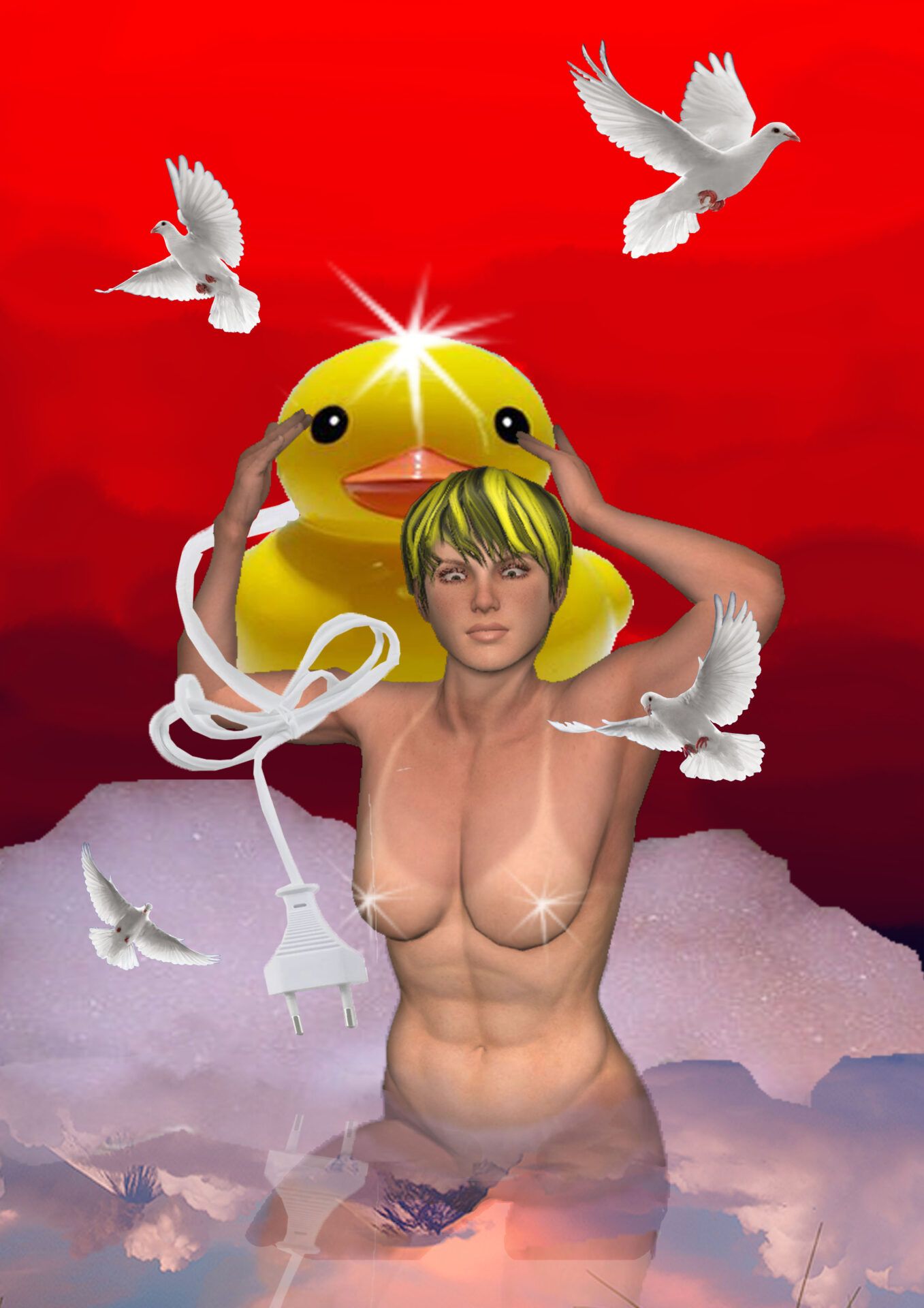
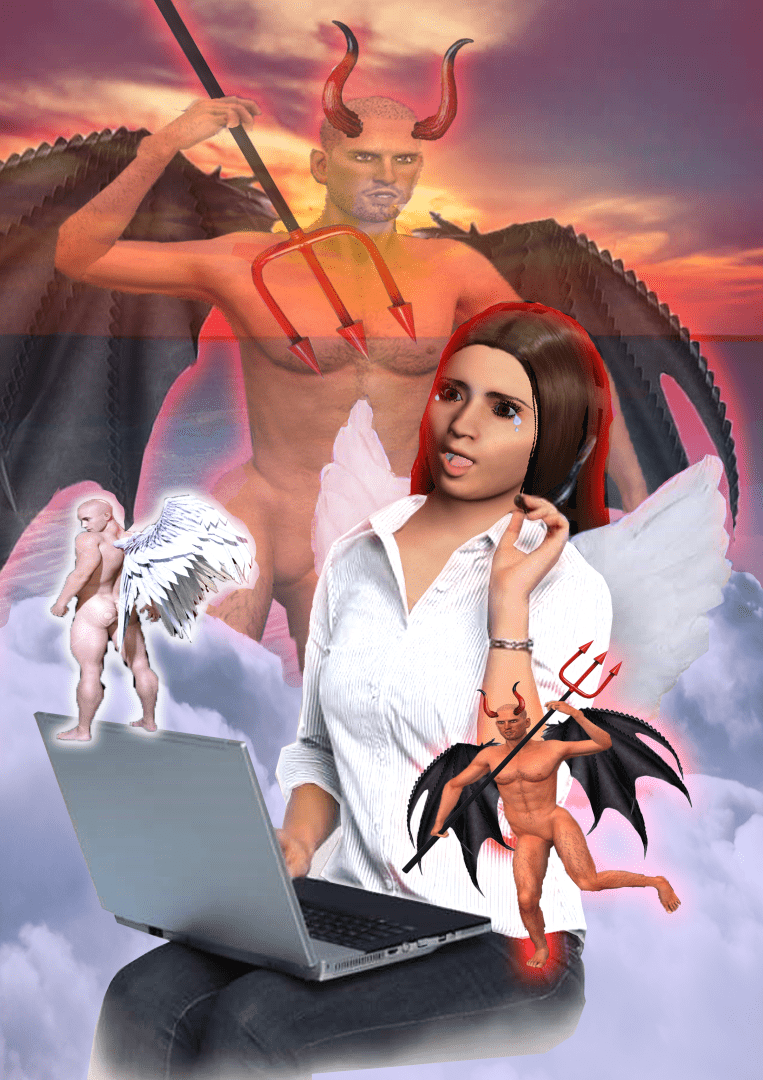
What is the background story of your artworks? What’s the process behind creating such a complex story in one piece?
I usually work with an archive of found and personal photos along with the figures from Daz 3D, which I customize to my liking. Usually I’ll have to start with something ‒ a landscape, a piece of furniture, a story, or a memory, and then it’s like a construction site, but first you need the foundation. The process can vary from one work to another, sometimes I just capture this image in my mind and then everything reveals itself piece by piece, like a puzzle. Some of my recent creations, for example, are about a reconnection with childhood. When I was younger and at my grandma’s, everything felt so unreal. Maybe it’s the distortion of memory or the passing of time, but every day was unique, magical. Even in the present age of artificial light, I don’t feel like the poetry and rituals we used to have are completely lost in the darkness; I try to recall them in some of my works.
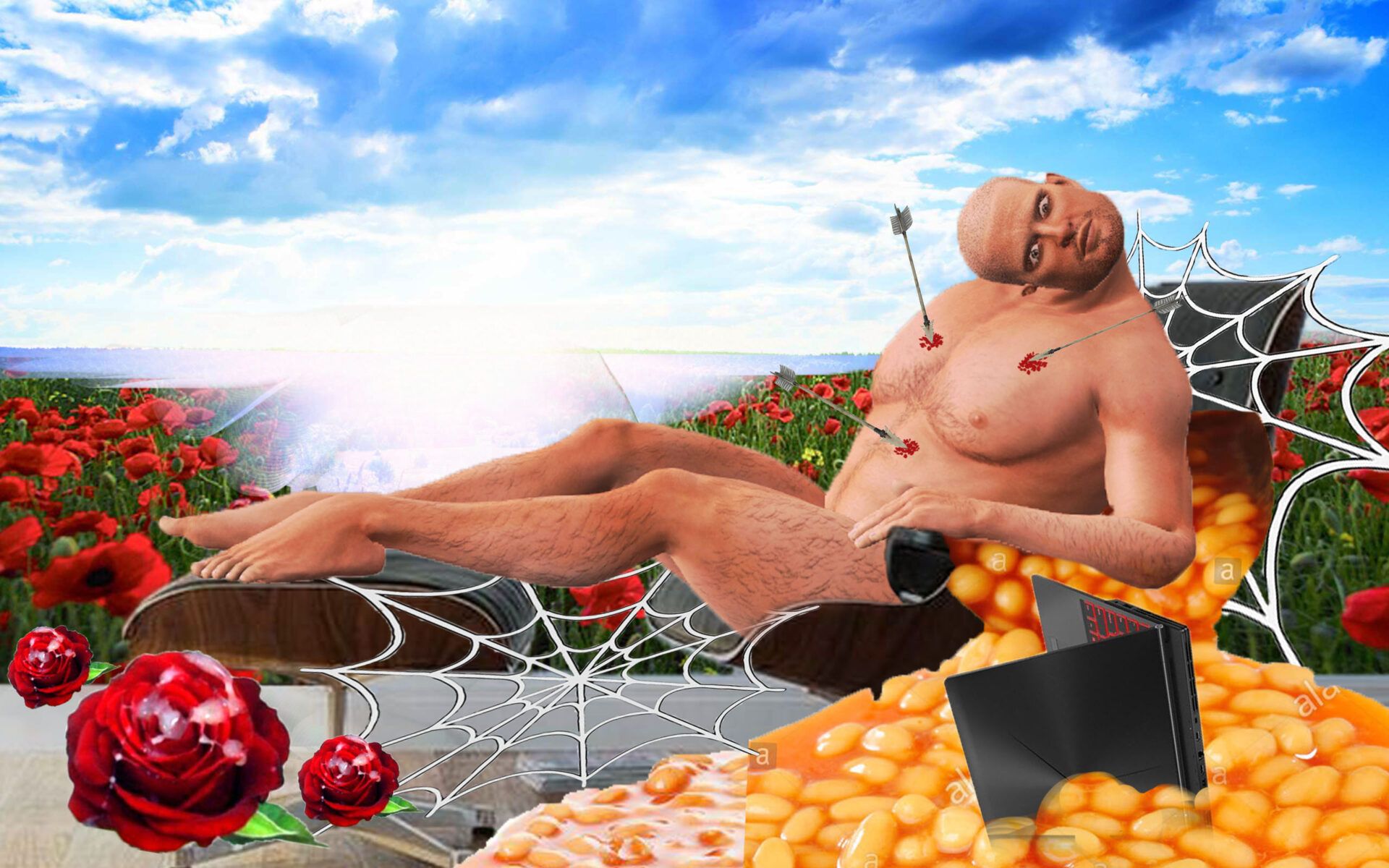
You often mix different kinds of objects and somehow make them match together, where do you get the inspiration for your collages?
I get inspired a lot by my surroundings, my memories, photos, and the virtual. I am attracted to the uncanny aesthetics of that reality, the combination of the material and immaterial worlds. With time, my interests changed, so you could say I made series of works: some of them relating to the subjects of isolation, alienation, disembodiment, or the latest exhibition I was involved in, where I made artworks that show what influence the overusing of screens and technology has on our nighttime and dreams.
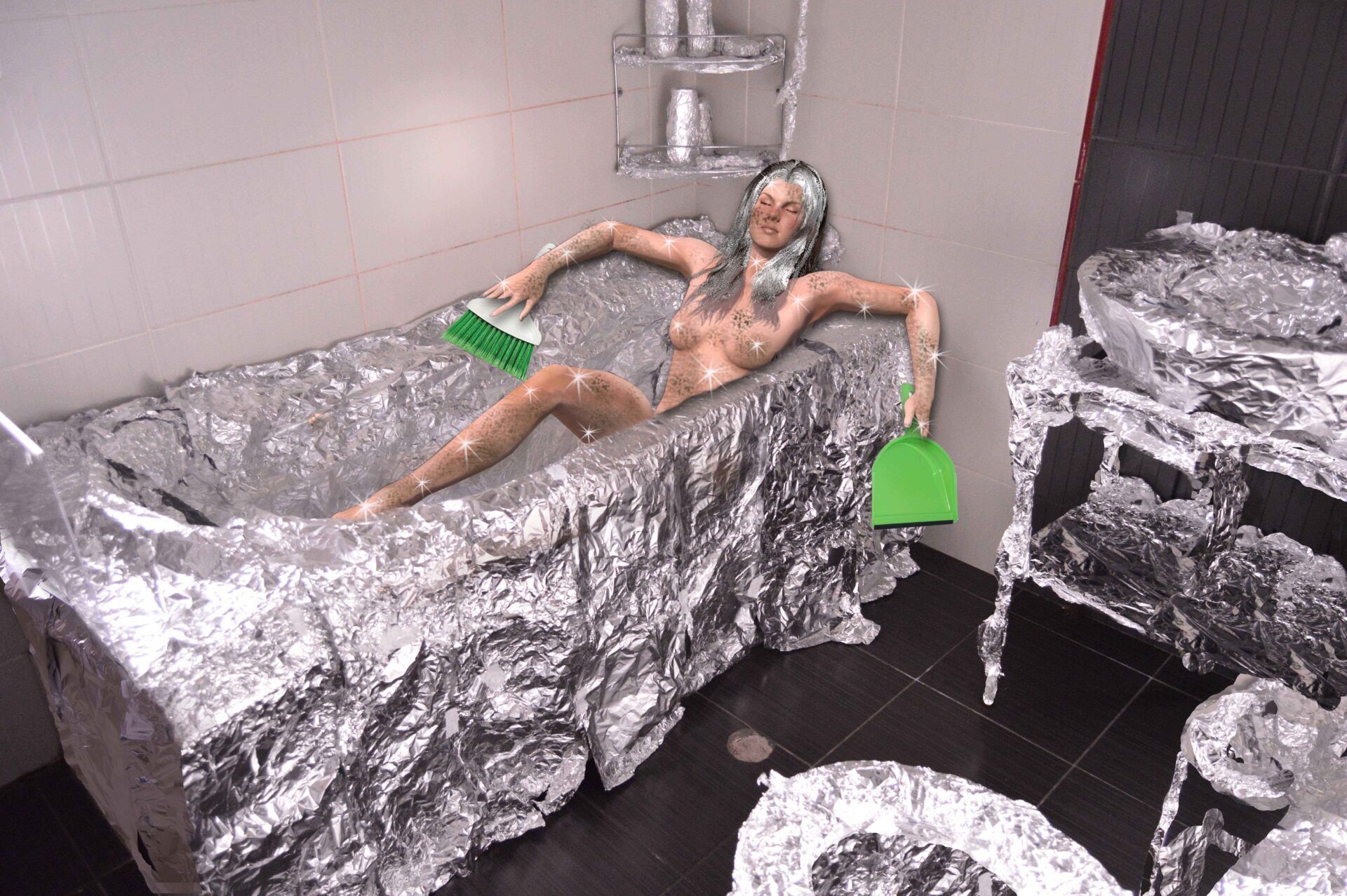

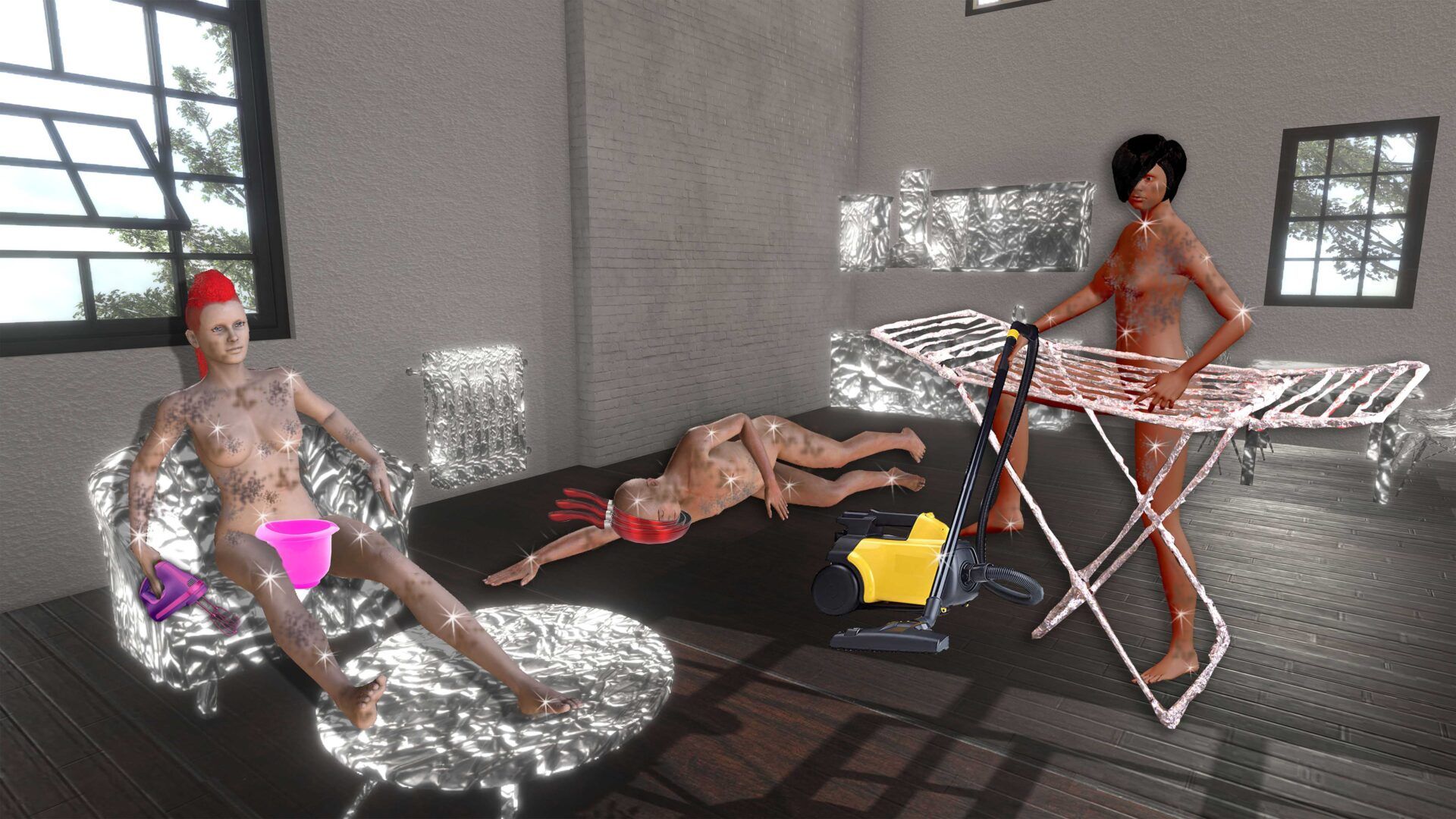
Under your IG post we might see a short description as an artwork title like “My Life Coach Insisted on 90 Days of Self-Love”. Is it the lead to understanding the piece/series?
This was the title of a group show that I took part in in Bucharest’s Atelier 35. The exhibition proposed a complex exploration of the self-help industry with its thought patterns and effective toolkit. Configured as self-improvement practices, they respond to individual strategies of adaptation to radiant representations of the self, of the peak professional performance and of the efficiently structured domestic environment, promoted by society as a series of ideal guidelines to go by. My output for this exhibition came as a need to find a balance between productivity and mental and physical health in this period when the work space intersects with the personal space, and the requirements of intensive, creative performance take place on an external background of social instability and economic and health crises.

The technique you use is dreamy meets surreal 3D collage. What style has influenced you the most or where would you place your art?
It all began with my painting studies at university. That added solidity to my practice, experience in composing and structuring the layers. I surely took a look at a vast amount of artists, since there are enormous quantities of artworks all over the internet. I can’t think about a particular style, but lately cinema has been playing an important role in my life, meaning that my admiration for certain unusual, experimental and disturbing genres is growing.
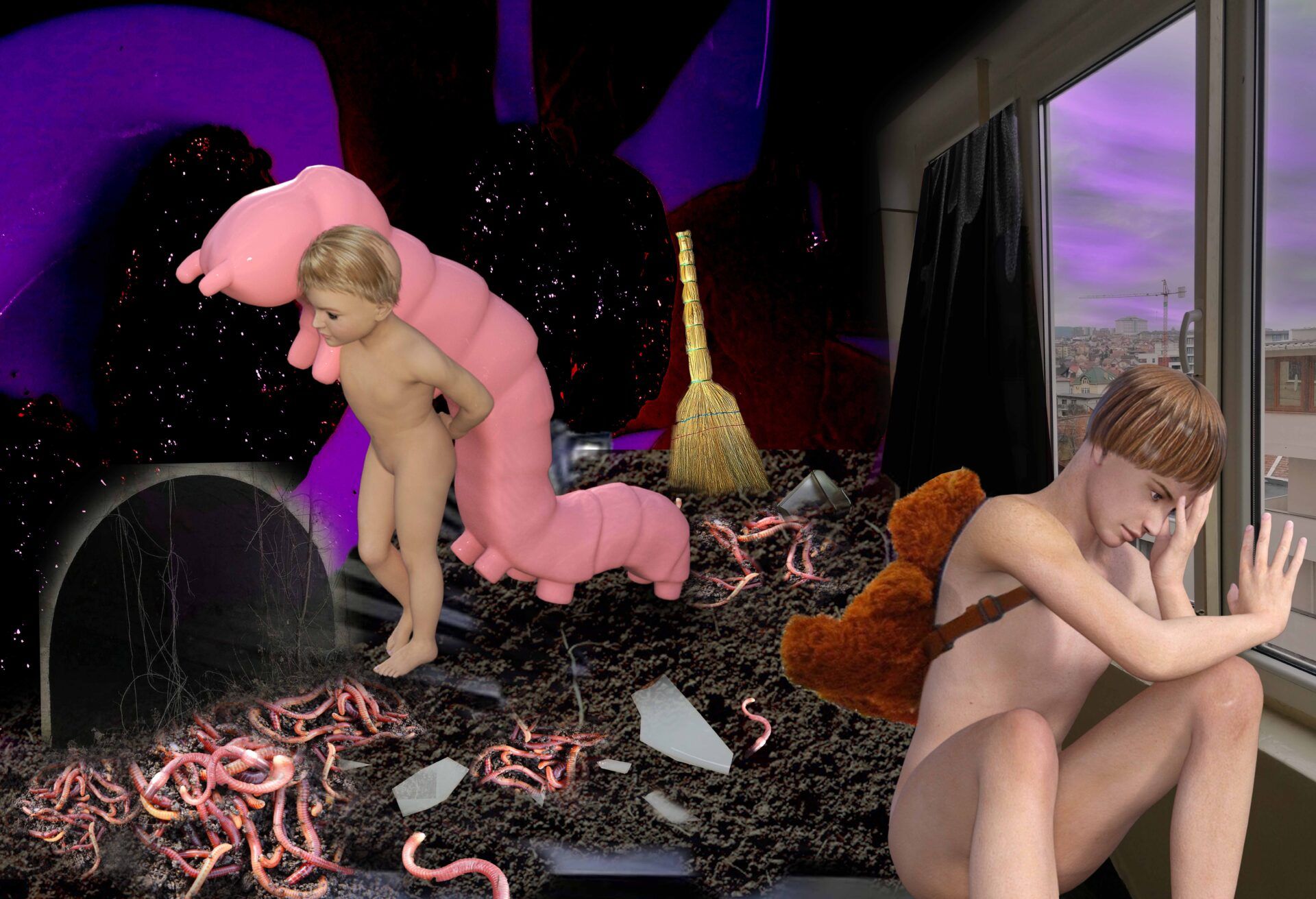
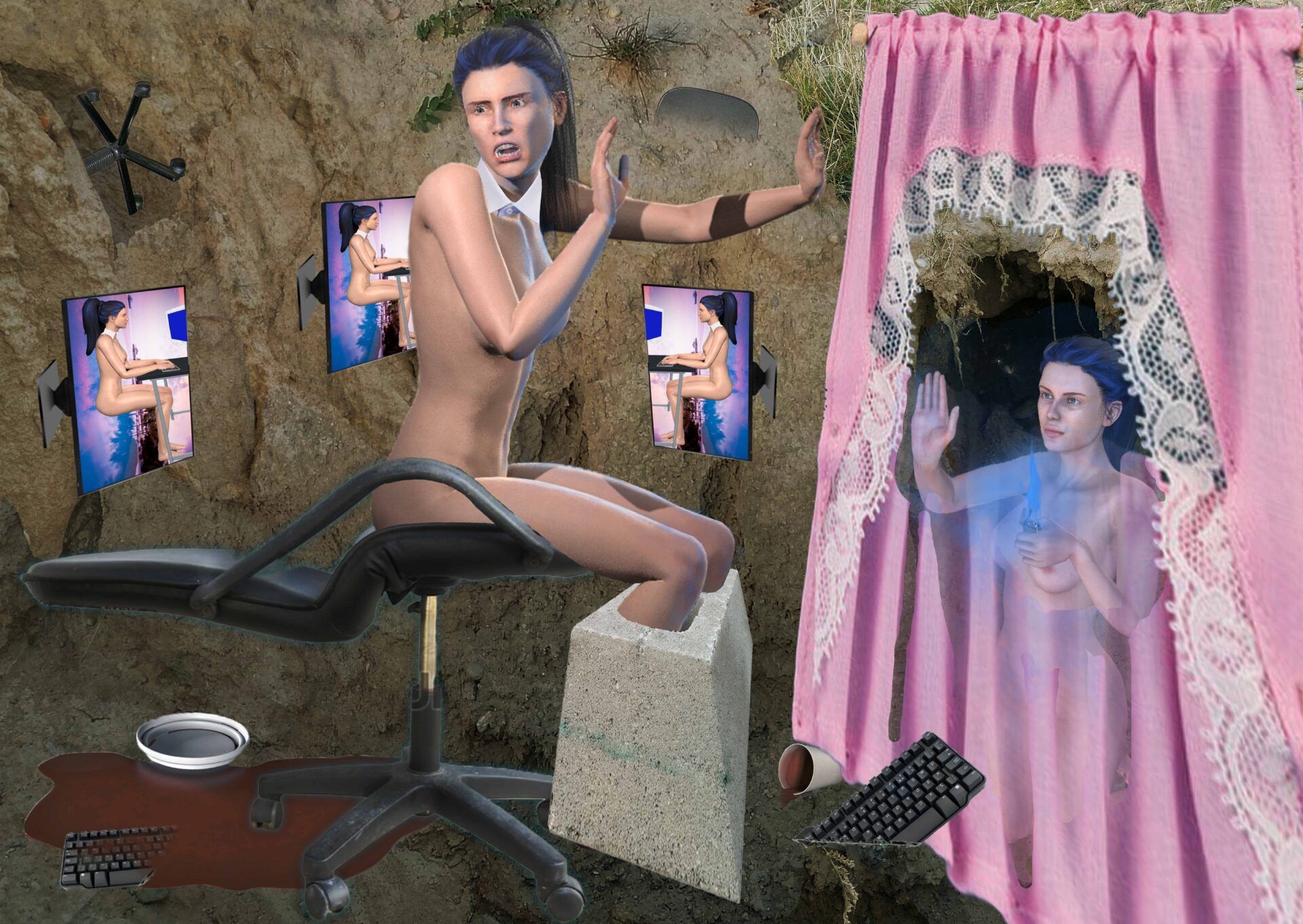
Since the article is published under the topic “Heavenly Bodies”, how important is the perception of the body within contemporary society (modifications, sculptures, faces/filters) for you?
I am glad you mentioned filters since I have been experimenting with those too. I think certain deformations can be beautiful. This is why I like filters, they can give us a slight
idea of how the bodies of the future might look like. My concern there is the cyborg “philosophy” and the image of symbiosis between man and machine, where certain parts of a human being would be replaced or modified into a mechanical or electronic apparatus.
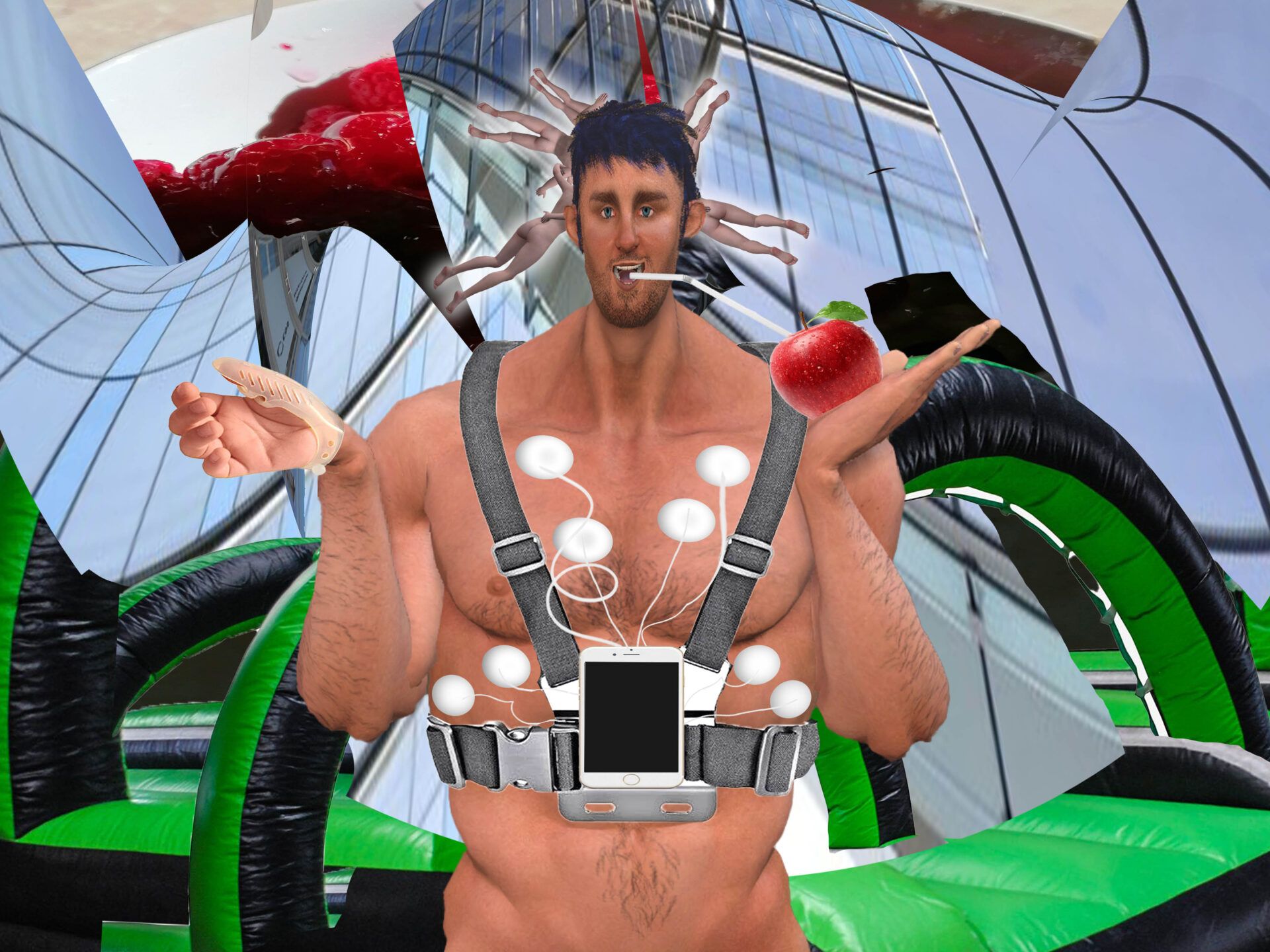
Your perception of humankind seems very self-destructive and nihilistic. What is your approach to humankind in your art and how can we/they save themselves? (from your bit depressing destiny in your art pieces).
They may seem just like soulless avatars, but I tried to create contrast; I’ve always had my mind focused on gloomy, uncomfortable situations in the context of a bigger picture. Making humans sometimes look weird, childish, so it can add a certain note of humor. From an uncanny perspective, the self-destructive and nihilistic habits should have remained hidden but have instead come to the surface, maybe because it is uncertain if humankind wants salvation.
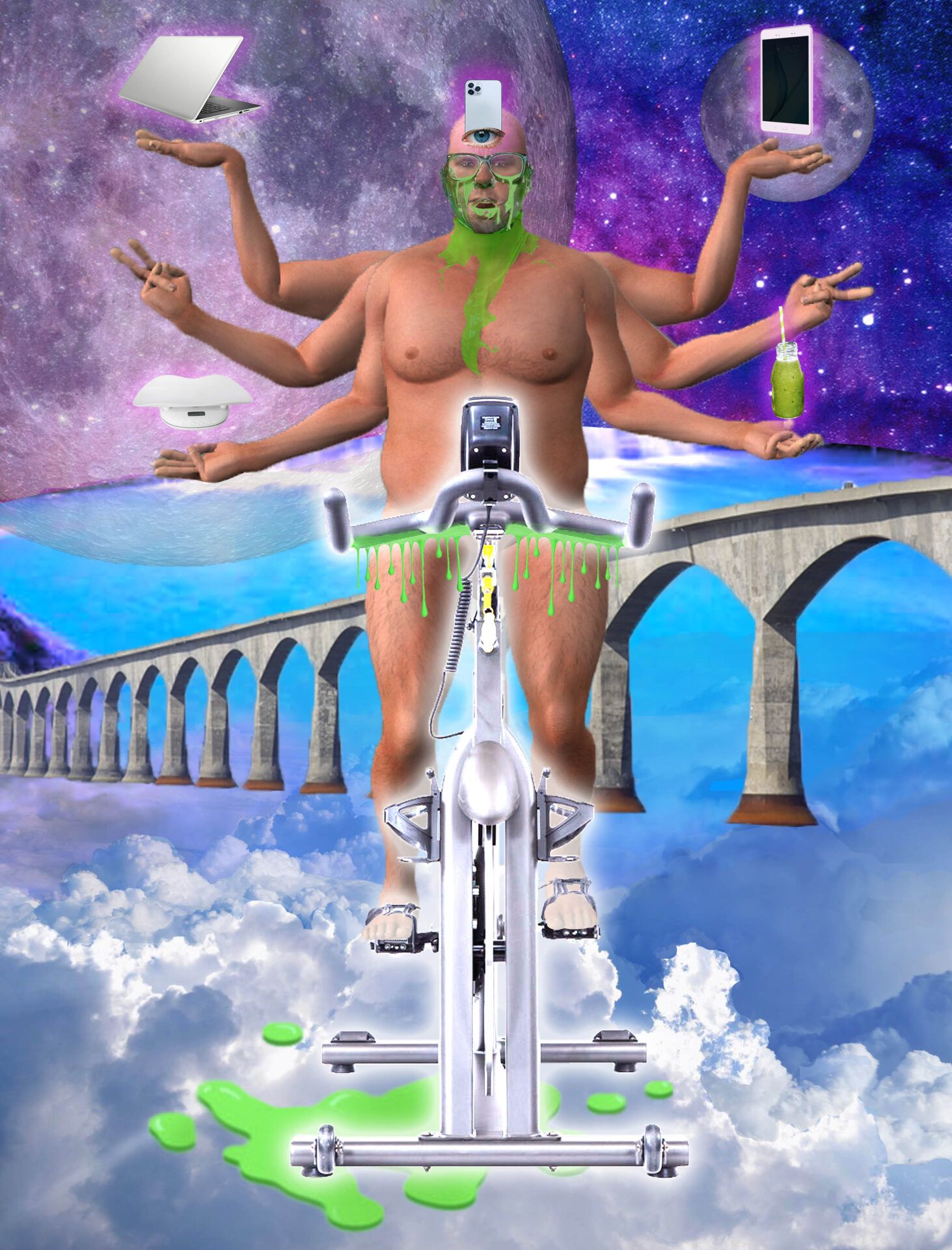
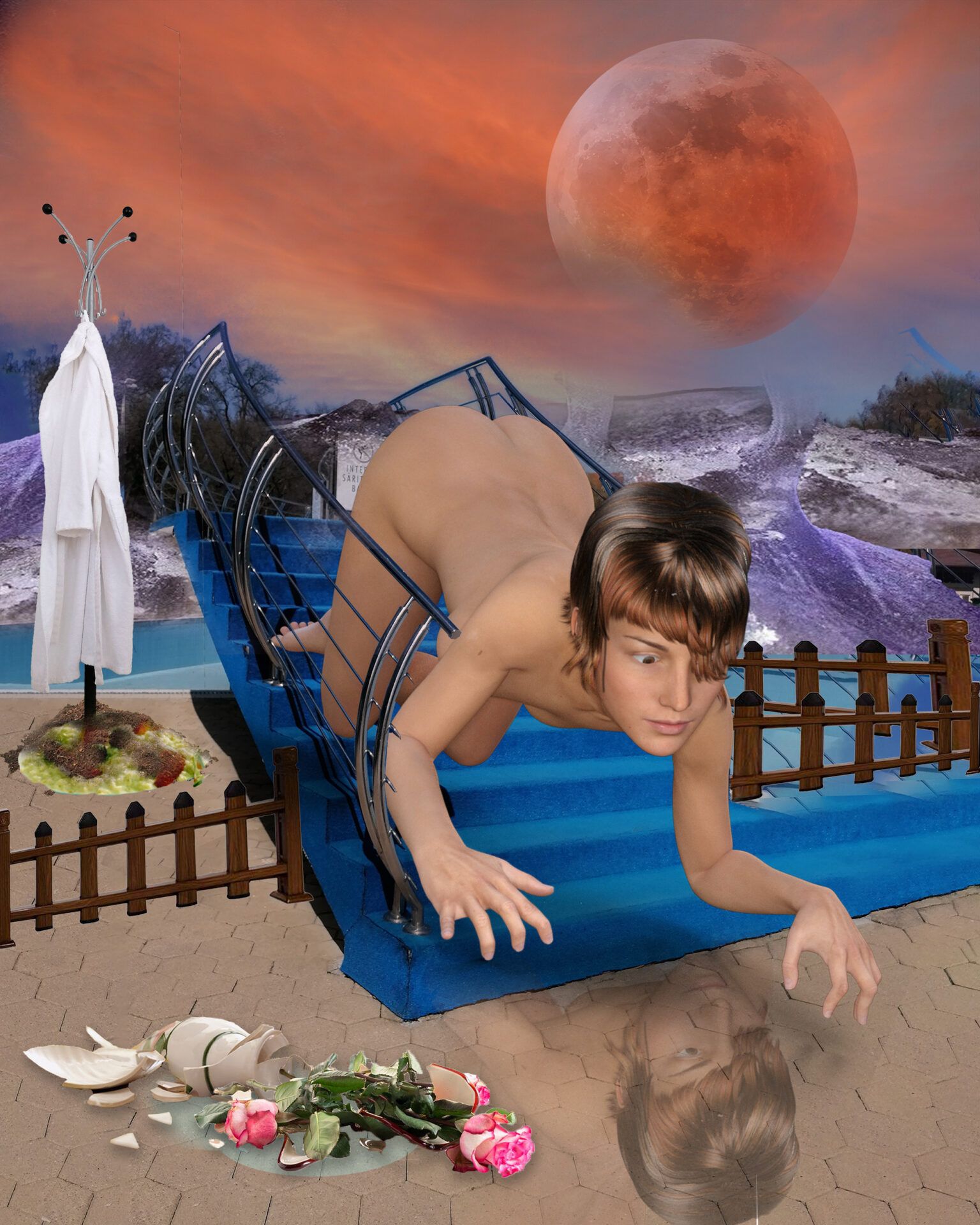
You are planning an exhibition soon. Are you working on any other projects that might interest our readers?
I’ve recently taken part in several group exhibitions and I have some similar projects currently taking place in Romania. Not long ago I’ve also made a new filter, “Cafelutza”, which is available on my Insta profile, and I plan on making more. I might also dip my toes into animation.
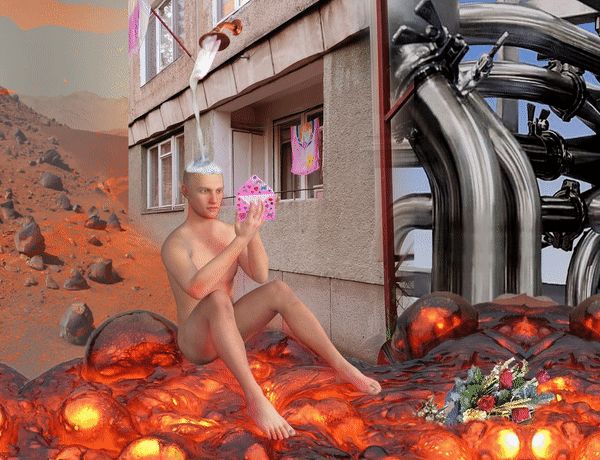
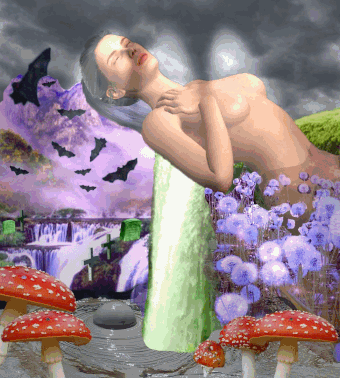
BIO/ Mureș Nicoleta (b.1996) lives and works in Cluj-Napoca, Romania. Her digital collages show images of a dystopian future, where the characters are immersed in virtual reality and they have to deal with unreal emotions while being influenced by the way in which technology fuels humanity’s desire to consume.




